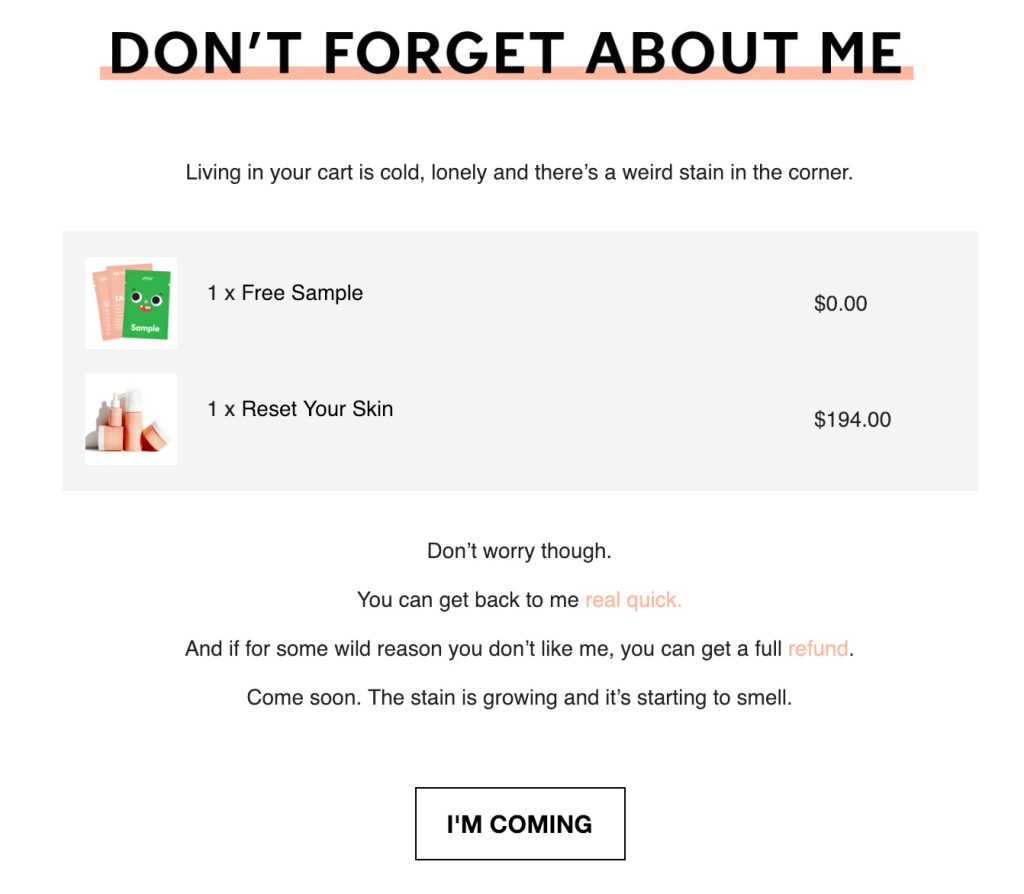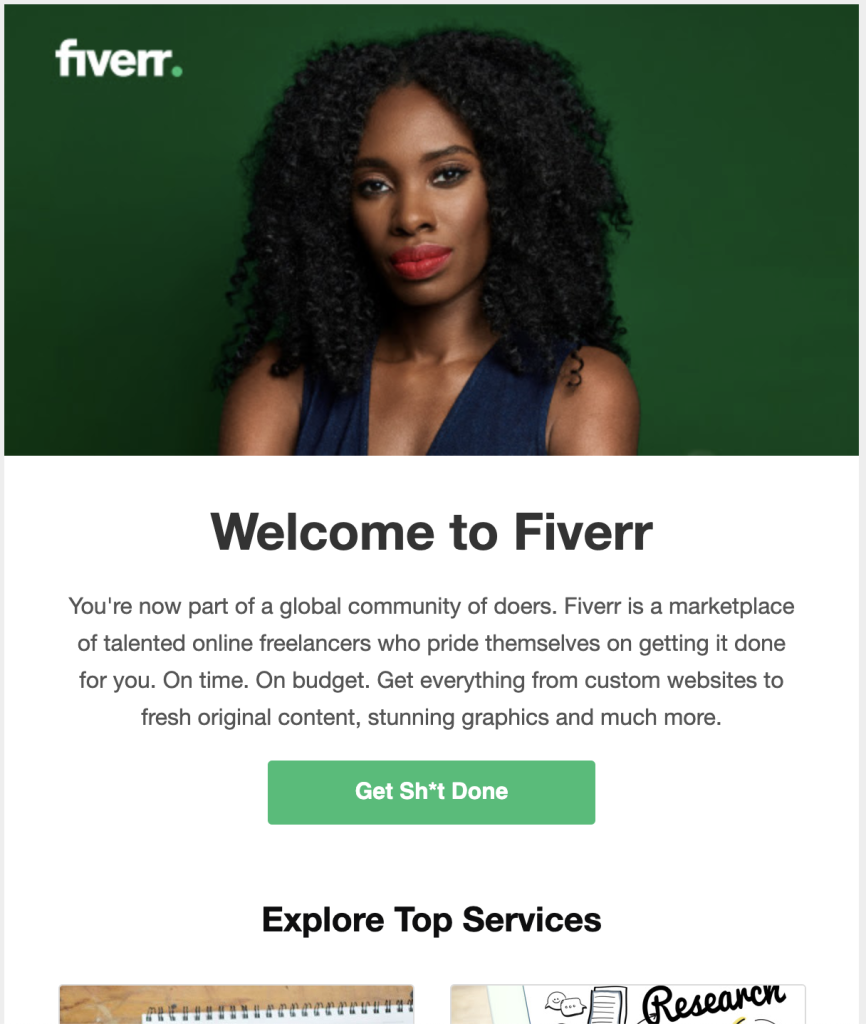An email sequence is a powerful tool for nurturing leads, building relationships and driving conversions.
By strategically sending a series of automated emails, businesses can guide prospects through the buyer’s journey, from initial awareness to final decision.
In this article, we delve into the ‘what’ and ‘why’ of sequences, explore best practices, and unpack different types to suit your specific goals.
Get ready to transform your email marketing and finally silence that inbox graveyard!
TABLE OF CONTENTS
– What is an Email Sequence?
– The top 5 types of Email Sequences
– 1) Welcome Email Sequence
– 2) Onboarding email sequence
– 3) Abandoned cart email sequence
– 4) Email sequence for repeat customers
– 5) Re-engagement email sequence
What is an Email Sequence?
An email sequence is a series of automated emails sent to a specific group of people on your email list over a set timeframe.
These sequences can be either trigger-based or time-based, designed to guide recipients through different stages of engagement with your brand.
a) Trigger-based sequences
These emails fire automatically based on a specific action someone takes. For example:
- Browsing behaviour: Someone views your healthy biscuits page but doesn’t buy any. A sequence could follow up with a recipe using these cookies or highlighting their health benefits.
- Subscription to your list: A welcome sequence introduces your bakery, showcases your most popular treats and offers a discount code.
- Shopping cart abandonment: Someone fills their cart with treats but never completes the purchase. A sequence could remind them of the tempting treats they left behind and offer a small incentive to complete the order.
- Reading or downloading content: Someone downloads your “Ultimate Guide to Baking Cookies”. A sequence could offer additional baking tips or exclusive cookie recipes.
- Buying a product: Someone buys a birthday cake. A sequence could send a follow-up email asking about their experience and offering suggestions for other celebratory treats.
Check out this shopping cart abandonment template:

b) Time-based sequences
These emails are sent at predetermined intervals, regardless of the user’s actions:
- Immediately after opt-in: a warm welcome email thanking them for subscribing and introducing them to your bakery’s specialities.
- 30 days after purchase: A “We miss you!” email reminding them of your delicious treats and offering a special promotion to entice them to make another purchase.
- Subscription anniversary: A “Thank you for being a loyal customer!” email expressing gratitude and offering a birthday treat (discount code, free delivery, etc.).
The top 5 types of Email Sequences
Understanding and using the right types of email sequences can significantly improve your email marketing strategy.
Each type of sequence serves a specific purpose and engages your audience at different stages of their journey with your brand. Here are the top five types of email sequences:
1. Welcome Email Sequence
The welcome email sequence is your first chance to make a great impression.
According to Omnisend, welcome emails have an average open rate of 45%, making them a critical opportunity to engage new subscribers. This sequence typically includes 4-6 emails that introduce your brand, share your core values and set expectations.
At Outbound Rocks, we recommend using these emails to nurture subscribers by telling compelling stories, demonstrating your expertise and gradually introducing them to your products.
By the end of the sequence, you want to have built up enough trust and interest to move them towards a purchase.
2. Onboarding email sequence
After welcoming new subscribers, the onboarding email sequence helps them get the most out of your product or service. This sequence is particularly important for SaaS businesses where the user needs to understand how to use the product effectively.
Key elements include personalised messages, clear instructions and a focus on benefits rather than just features. Including social proof and testimonials can also help build trust and encourage continued engagement.
The aim is to ensure that new customers feel supported and confident in their decision to choose your product, ultimately leading to higher retention rates.
3. Abandoned cart email sequence
Shopping cart abandonment is a significant challenge for e-commerce businesses, with an average abandonment rate of 77%. An abandoned basket email sequence can help recover potential lost sales by reminding customers of their pending purchases.
This sequence typically consists of three emails: the first is a gentle reminder sent at 24 hours, the second addresses any objections at 48 hours and the third offers an incentive, such as a discount, at 72 hours.
By showing the product they left behind and highlighting its benefits, you can re-engage customers and encourage them to complete their purchase.
4. Email sequence for repeat customers
Retaining repeat customers is crucial as they tend to spend more and contribute significantly to your revenue. A repeat customer email sequence is designed to keep these valuable customers coming back.
This sequence can start with a check-in email 2-3 days after a purchase, asking for feedback and offering useful content or product recommendations. Later emails can upsell or cross-sell related products.
Personalised recommendations and special offers can further enhance their experience and loyalty. The goal is to show appreciation and provide ongoing value to keep your brand top of mind.
5. Re-engagement email sequence
Over time, some subscribers may become inactive or disengaged. A re-engagement email sequence is designed to win back these lapsed customers.
Sent 30-60 days after their last interaction, this sequence typically consists of 2-3 emails reminding them of the benefits of your products or services. Highlighting their previous successes with your brand and offering incentives can encourage them to return.
Effective re-engagement emails are personalised and demonstrate that you value their business, helping to rekindle their interest and participation.
Check out this welcome email from Fiverr:

Are you ready to take your email marketing to the next level? Try our free demo today and discover how Outbound Rocks can help you optimize your sales funnel and connect with your ideal prospects.